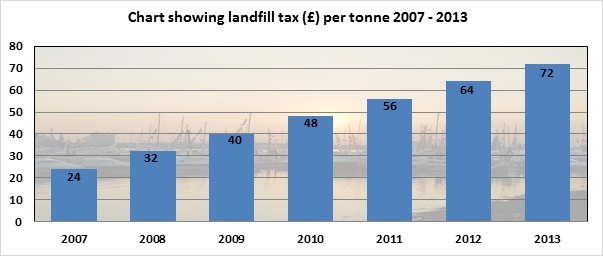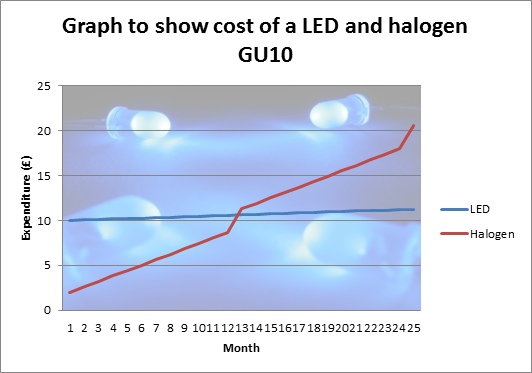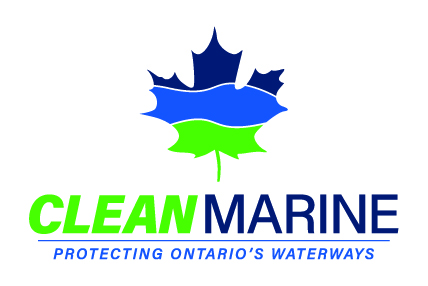Information
-
Client / Site
-
Document No.
-
Audit Title
-
Conducted on
-
Prepared by
-
Location
Background
Background
-
The Green Blue is a joint venture initiated by the British Marine Federation (BMF) and the Royal Yachting Association (RYA) promoting best environmental practice to recreational boaters and the recreational marine industry. The Green Blue is unique as the only UK wide environmental programme working across the whole recreational marine sector.
The Green Blue’s is funded by The Crown Estate’s Marine stewardship programme. The programme supports practical projects, relevant research, and other initiatives that improve the status and management of the marine estate.
With around 55% of the foreshore, approximately half of all estuary beds and tidal rivers and the seabed out to the 12 mile territorial limit, the marine estate is the largest and most diverse within The Crown Estate. They are committed to sustainable and long-term management of these unique assets.
Bills
Energy, Water and Waste bills
-
Energy bills available?
-
Reason for this and when will bills be made available?
-
Do the bills appear high or low for the club size?
-
Photo of bill
-
Waste bills available?
-
Reason for this and when will bills be made available?
-
Do the bills appear high or low for the club size? How often is waste picked up?
-
Photo of bill
-
Is a recycling scheme set up?
-
All waste that is sent to landfill is subject to landfill tax. Last year it was charged at £64 per tonne. This has been raised to £72 per tonne in 2013. Next year this will continue to rise. By setting up a recycling scheme you can ensure that not all of your waste is sent to landfill. This waste that is recycled will not be subject to the landfill tax and therefor be cheaper to dispose of.
-
-
Is hazardous waste generated?
-
How is it desposed of?
-
Photo of hazardous waste management
-
Water bills available?
-
Reason for this and when will bills be made available?
-
Do the bills appear high or low for the club size?
-
Photo of bill
Site walk around
Site walk round
-
Please enter room information
Room
-
Room name
Lighting
-
Photo of room
-
Are GU10 halogen bulbs is use?
-
Graph showing return on investment for £10 dimmable LED bulbs
-
Halogen GU10 bulbs can be changed to LED bulbs. The LED bulbs will retrofit straight into the sockets. The reason for doing this is that halgens generally run at 50 watts per bulb. LED bulbs will run between 1 and 3 watts per bulb. So changing from halgens to 3 watt LED bulbs would reduce energy usage by 47 watts or 94%. The life time of LED bulbs is also far greater than halogen bulbs. It is estimated that an LED bulb will last 50,000 hours.
-
How many bulbs are there?
- 1
- 2
- 3
- 4
- 5
- 6
- 7
- 8
- 9
- 10
- 15
- 20
- 25
- 30
- 30+
-
For changing one bulb it will cost approx £3 and will reduce energy use by 96%. Payback from savings is around 8 months. This would result in a five year saving of £19.50
(replacing a 50 watt halogen with 2 watt LED bulb) -
For changing two bulbs it will cost approx £6 and will reduce energy use by 96%. Payback from savings is around 8 months. This would result in a five year saving of £39
(replacing 50 watt halogens with 2 watt LED bulbs) -
For changing three bulbs it will cost approx £9 and will reduce energy use by 96%. Payback from savings is around 8 months. This would result in a five year saving of £58.50.
(replacing 50 watt halogens with 2 watt LED bulbs) -
For changing four bulbs it will cost approx £12 and will reduce energy use by 96%. Payback from savings is around 8 months. This would result in a five year saving of £78
(replacing 50 watt halogens with 2 watt LED bulbs) -
For changing five bulbs it will cost approx £15 and will reduce energy use by 96%. Payback from savings is around 8 months. This would result in a five year saving of £97.50.
(replacing 50 watt halogens with 2 watt LED bulbs) -
For changing six bulbs it will cost approx £18 and will reduce energy use by 96%. Payback from savings is around 8 months. This would result in a five year saving of £117.
(replacing 50 watt halogens with 2 watt LED bulbs) -
For changing seven bulbs it will cost approx £21 and will reduce energy use by 96%. Payback from savings is around 8 months. This would result in a five year saving of £136.50.
(replacing 50 watt halogens with 2 watt LED bulbs) -
For changing eight bulbs it will cost approx £24 and will reduce energy use by 96%. Payback from savings is around 8 months. This would result in a five year saving of £156.
(replacing 50 watt halogens with 2 watt LED bulbs) -
For changing nine bulbs it will cost approx £27 and will reduce energy use by 96%. Payback from savings is around 8 months. This would result in a five year saving of £175.50.
(replacing 50 watt halogens with 2 watt LED bulbs) -
For changing ten bulbs it will cost approx £30 and will reduce energy use by 96%. Payback from savings is around 8 months. This would result in a five year saving of £195.
(replacing 50 watt halogens with 2 watt LED bulbs) -
For changing 15 bulbs it will cost approx £45 and will reduce energy use by 96%. Payback from savings is around 8 months. This would result in a five year saving of £292.50.
(replacing 50 watt halogens with 2 watt LED bulbs) -
For changing 20 bulbs it will cost approx £60 and will reduce energy use by 96%. Payback from savings is around 8 months. This would result in a five year saving of £390.
(replacing 50 watt halogens with 2 watt LED bulbs) -
For changing 25 bulbs it will cost approx £75 and will reduce energy use by 96%. Payback from savings is around 8 months. This would result in a five year saving of £487.50.
(replacing 50 watt halogens with 2 watt LED bulbs) -
For changing thirty bulbs it will cost approx £90 and will reduce energy use by 96%. Payback from savings is around 8 months. This would result in a five year saving of £585.
(replacing 50 watt halogens with 2 watt LED bulbs) -
For changing thirty bulbs it will cost approx £90 and will reduce energy use by 96%. Payback from savings is around 8 months. This would result in a five year saving of £585. For every extra 10 bulbs you replace it would cost £30 and result in an extra five year saving of £195.
(replacing 50 watt halogens with 2 watt LED bulbs) -
Are fluencent light bulbs is use?
-
When looking at fluecence light bulbs it is important to check what bulb is being used. The same fitting will accept T12's, T8's and T5's. Generally we find that when the bulb goes people replace it with the same that was already there. If you have T12's fitted then you should change these to T8's once they are blown. This is because T8's use approximately 70% less energy than T12's. Where possible you can also change down to T5's although the savings are greater from T12's to T8's. It is also important to remember that even when fluecent bulbs have blown they still draw a current when the light switch is turned on, so you should replace bulbs as soon as possible to reduce energy wastage.
-
Are standard filament light bulbs is use?
-
The EU has recently made a decision to reduce the use of standard filament bulbs. This means that it is now more dificult to source the bulbs. Instead energy efficient bulbs are now in use. The reason for this is that you can now get 11 watt bulbs that have the equivalent light to a 60 watt standard bulb. This is an energy saving of 49 watts per bulb or 81%. This will therefor reduce your energy consumption by 81%.
-
Is the lighting in the room on a movement or light sensor?
-
This is great to see. Make sure that the sensor is working and include a check in your monthly walk round.
-
Would the room benefit from this?
-
Using motion sensor on lights can be a good way of ensuring they are not left on and wasting energy. A combination of motion sensors and movement sensors can also be used. This would mean that the lights only come on when someone is in the room and when there is insufficient natural light.
Water efficiency
-
Is water used in this room?
-
Are the taps push button?
-
Push button opperated tape will ensure that no water is wasted if people accidently leave the taps on. You can adjust the spring tension to make sure the taps run for a long enough time.
-
Are there shower units?
-
Are the showers push button?
-
Push button showers will help you reduce water usage. They do this in two ways. Firstly they can not be accidently left on and secondly it makes it less comfortable to "lounge" in the showers after a cold day sailing.
-
Are there toilet systems?
-
Reducing the amount of water used in each flush can save a lot of water. You can install a duel flushnsystem, but alternatively you can use a hipponbag. This takes upmspace in the toilet and therefor uses less water per flush.
-
Are there urinals?
-
Urinals are usually on sensors to determine when they flush. This is a great idea as having urinals constantly flushing would waste water. It is important to check that these sensors work. Faulty sensors can cause massive amounts of wasted water. Alternatively you can install push buttons to the urinals so they only flush when needed.
-
Do the flush sensors work?
-
Photo of room
Heating system and efficiency
-
Is the building heated?
-
Is the heating electric?
-
Gas central heating can be very efficient as long as the boilers are in good condition. If you are looking to update your system it may be worth considering installing solar thermal pannels or using multiple micro boilers instead of one large boiler.
-
Are renewable energy sources being used?
-
Renewable energy systems work extremely well withnelectric heating, especially under floor heating. By using a combinatin of heat pumps and solar pv pannels you can have a heating system of up to 400% efficiency. The highest gas heating systems run at 100% efficiency. If this is something you would be keen to invest in please contact me and I can talk through what I kow about renewables.
Club development plans
Development Plan
-
Does the club have plans for development?
-
Details of plan, environmental policy, Renewables etc
-
It is important for a club to have a development plan. This will help with any future funding applications. You can also incorporate an environmental policy into the clubs development plan.
Boat washdown
Boat wash down
-
Is boat washdown done on site?
-
What precautions, if any, are put in to prevent chemicals and debris washing into the water system?
-
Photo of boat washdown
Notes
Notes
Signatures
-
Auditor name
-
Auditor signature
-
Club member name
-
Club members position
-
Club members signature
Disclaimer
-
The Green Blue is the joint environment project of the British Marine Federation and the Royal Yachting Association. The Green Blue provides practical help and advice to the UK recreational marine sector to minimise its impact on the environment.
Important note: This report represents the findings of a site visit carried out by The Green Blue. Reasonable steps have been taken to ensure that the information provided within this document represents current industry best practice as at the date of this report.
The Green Blue, its parent bodies the British Marine Federation and the Royal Yachting Association, do not accept liability for matters of legal compliance or general legal advice. This report is intended only for the named recipient and may not be relied upon or copied or reproduced in whole or part by third parties.














